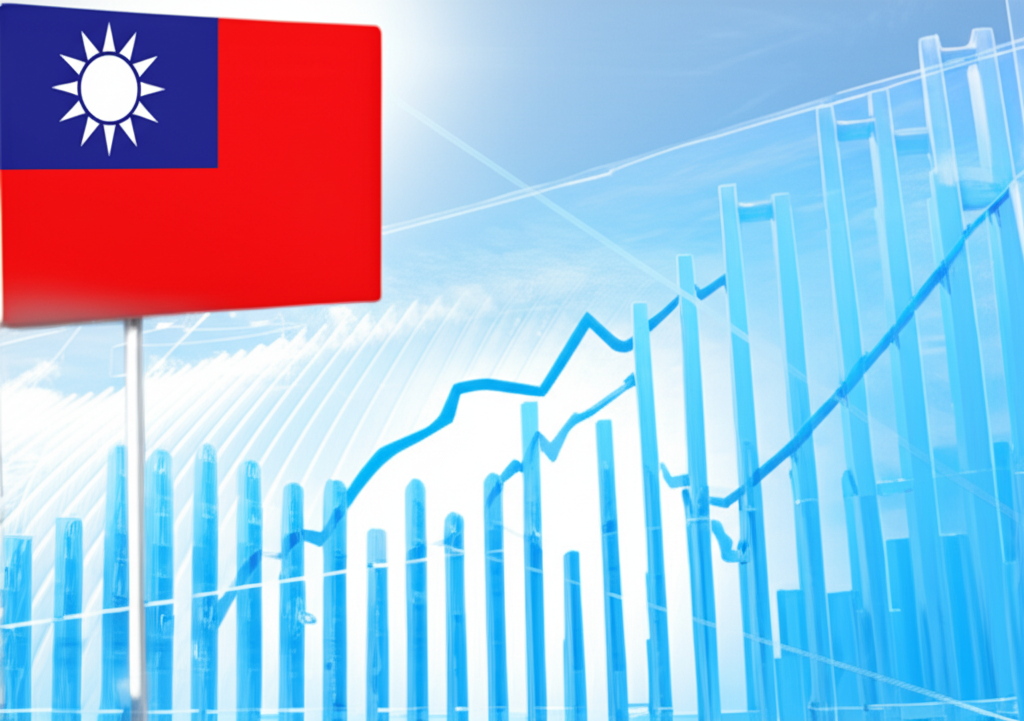Taiwan Navigates U.S. Trade Winds: Balancing Tariffs and Economic Growth
Economists Urge Strategic Review of Trade Practices in Response to U.S. Tariffs and Shifting Export Dynamics.

Taipei, April 3 – Following the imposition of reciprocal tariffs by the U.S., the Taiwanese government faces a critical juncture, with economists urging a comprehensive review of existing import duties and trade practices to mitigate the impact.
The focus should be on addressing the trade barriers that prompted U.S. President Donald Trump's measures. According to Dachrahn Wu (吳大任), a professor at National Central University's Department of Economics, speaking to a news outlet, the government should analyze a recent report by the United States Trade Representative, which pinpointed issues concerning cars, as well as U.S. beef and pork products.
Wu highlighted that the 32 percent reciprocal tariff announced by Trump reflects Washington's perception of high trade barriers in Taiwan. Notably, Taiwan faces higher tariffs compared to Japan (24 percent) and South Korea (26 percent), despite Taiwan Semiconductor Manufacturing Co. (TSMC)'s substantial US$100 billion investment in expanding its American operations.
The economic implications for Taiwan are significant, as Taiwanese exporters have become increasingly reliant on the U.S. market. Data from the Ministry of Finance indicates that, for the first time in 24 years, the U.S. became Taiwan's top export destination in February, accounting for 28.5 percent of total outbound sales, closely followed by China and Hong Kong (28.4 percent).
Wu projected that if exports to the U.S. constitute a quarter of Taiwan's total exports this year and exports contribute 60 percent to Taiwan's gross domestic product (GDP), Trump's tariff could impact 15-20 percent of Taiwan's GDP this year. He also suggested the Ministry of Economic Affairs explore options for industries like steel, petrochemicals, or the semiconductor supply chain to expand investments in the U.S. to align with Trump's goal of boosting American manufacturing.
With TSMC stating its investment in Taiwan will remain unaffected by its U.S. expansion, Wu emphasized the need for the government to strategize for potential shifts in the semiconductor supply chain. The impact on domestic investment could further strain Taiwan's GDP growth, potentially making the 3 percent target more challenging.
Cathay United Bank chief economist Lin Chi-chao (林啟超) proposed that the Ministry of Finance consider reducing the 17.5 percent import tax on automobiles and the 30 percent tariff on health food as potential bargaining chips in negotiations with the U.S. While acknowledging the difficulty of rapidly reducing the U.S. trade deficit with Taiwan, he suggested increasing purchases of U.S. natural gas and oil, boosting U.S. production, and strengthening the Taiwan dollar as potential remedies.
The U.S. trade deficit with Taiwan surged by 54.6 percent to US$73.92 billion in 2024, ranking sixth among Washington's trading partners, according to data from the International Trade Administration under the Ministry of Economic Affairs. Lin also noted the need for Taiwanese businesses that have relocated production to Vietnam and Thailand to reassess their positioning and supply chains, given the reciprocal tariffs of 46 percent and 37 percent, respectively, imposed on those countries.
Other Versions
Taiwán navega entre los vientos comerciales de EE.UU: Equilibrio entre aranceles y crecimiento económico
Taiwan navigue dans les vents commerciaux américains : Équilibrer les tarifs douaniers et la croissance économique
Taiwan Menghadapi Angin Perdagangan AS: Menyeimbangkan Tarif dan Pertumbuhan Ekonomi
Taiwan naviga tra i venti commerciali degli Stati Uniti: Equilibrio tra tariffe e crescita economica
台湾、米国の貿易風を操る:関税と経済成長のバランス
대만, 미국의 무역 바람을 헤쳐나갑니다: 관세와 경제 성장의 균형
Naging Matagumpay ang Taiwan sa U.S. Trade Winds: Pagbalanse sa Taripa at Paglago ng Ekonomiya
Тайвань ориентируется в торговых ветрах США: Баланс между тарифами и экономическим ростом
ไต้หวันรับมือกระแสลมค้าสหรัฐฯ: สมดุลภาษีนำเข้าและการเติบโตทางเศรษฐกิจ
Đài Loan Điều Hướng Gió Thương Mại Hoa Kỳ: Cân Bằng Thuế Quan và Tăng Trưởng Kinh Tế
